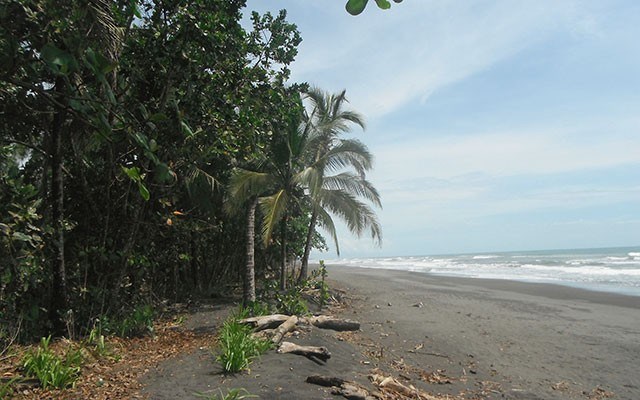La Tortuga Feliz is a marine turtle conservation program run by, and for, volunteers on an isolated jungle beach on the southern Caribbean coast of Costa Rica.
The aim is to protect nesting turtles from poachers, while working with local inhabitants as guides so as to remove the financial necessity to poach the eggs and turtles.
Our travel to Tortuga Feliz requires a three-hour bus ride from San Jose then 30 minutes by truck through the banana plantations to a small tributary of the Pacuara River. With our packs, we pile into an open boat, joining the other six new volunteers and the week's groceries for the one-hour trip down river through lush jungle under monkeys, sloths, iguanas and past caimans on the banks.
As a family of four, we were looking to take part in a conservation project during our travels and discovered La Tortuga Feliz as an affordable alternative. They were able to accommodate our children's ages with the guarantee our girls were up for the challenge of 10 kilometres of the hot, humid nightly beach patrols. "What is the hard part supposed to be?" wondered our 11-year-old, who was the driving force for this part of our trip.
This is boot camp for conservationists where we are met by the rawness of nature as the wild ocean pounds the picture perfect black sand beach. (Swimming is discouraged due to rip tides and bull sharks.)
We have a bunkroom to ourselves (except for the land crabs and other crawling critters we try to ignore) and share bathrooms and showers with the other volunteers and the local toads that sneak in at night. We are fed three large meals a day and have hammocks for napping, reading and visiting with other volunteers all hosted by Robert, the volunteer manager, organizer, chef, Spanish teacher and all around excellent host who has been running the program for 10 years.
It requires no encouragement for our family to climb out of our bunks nightly, dress in long, dark clothing and closed-toed shoes to avoid sand fleas, find our red headlights and set off to meet our guide in the dark.
We patrol the 11 kilometres of beach in the dark each night over a four-hour shift. Our goal is to find a nesting turtle emerging from the ocean before a poacher reaches her. Whoever reaches the turtle first gets her! If luck is with us, there is the privilege of watching her move up the beach, create a nest before we approach and lay her eggs as we collect them. After recording her length, usually up to two metres, checking for tags and ensuring her safe return to the sea, it is then time to walk back to camp and the hatchery with the 80 very heavy eggs to meet volunteers on hatchery duty. A 75-centimetre deep nest is hand-dug for the eggs — they will be placed in the nest to incubate for 70 days before the baby turtles start to emerge.
Since the babies usually come out of the nest at night, hatchery duty can be busy digging nests and recording and releasing hatchlings.
Our second night out, we are lucky. It is difficult to describe the feeling when witnessing a 450-kilogram leatherback turtle slowly emerge from the pounding surf in the dark on a black-sand beach. It is a surreal experience worth a lifetime of Imax and National Geographic movies. To be able to do this as a family is a special type of joy.
The critically endangered leatherback turtles spend their lives in deep oceans returning to nesting grounds at 15 to 20 years of age to lay up to seven nests every second year. Fossils of the ancestors of these prehistoric-looking reptiles have been dated back to 100 million years ago. This astounds us when we realize that humans have inhabited this earth for only six million years.
The endangered hawksbill and green turtles that also nest on the beach reach maturity at about 25 years of age when the females come to shore to lay eggs. The hawksbill turtle is a keystone species in the ocean feeding on sponges, which maintain the balance in coral reefs. Its shell is also very valuable to the poachers
When La Tortuga Feliz began its project 10 years ago, 100 per cent of all leatherback turtle nests and all green and hawksbill turtles were poached for their eggs, meat or shells on this stretch of beach. Ten years later, 55 per cent of the turtles coming to shore have been able to return to sea, their nests taken to the hatchery and in 2015, 4,400 hatchlings were released for a chance at a future. Since only one in 1,000 reach maturity, this work is of vital importance.
After a fast week, we must leave to continue our travels. We depart first thing in the morning the way we have arrived, though dirtier and more tired, but with memories of experiences that will last forever.
Perhaps in 25 years, our children will be able to come back with their children to watch one of our hatchlings return and lay their eggs in a cycle that has existed for millions of years.
La Tortuga Feliz offers this unforgettable experience for one-week intervals from March to November. www.latortugafeliz.com




